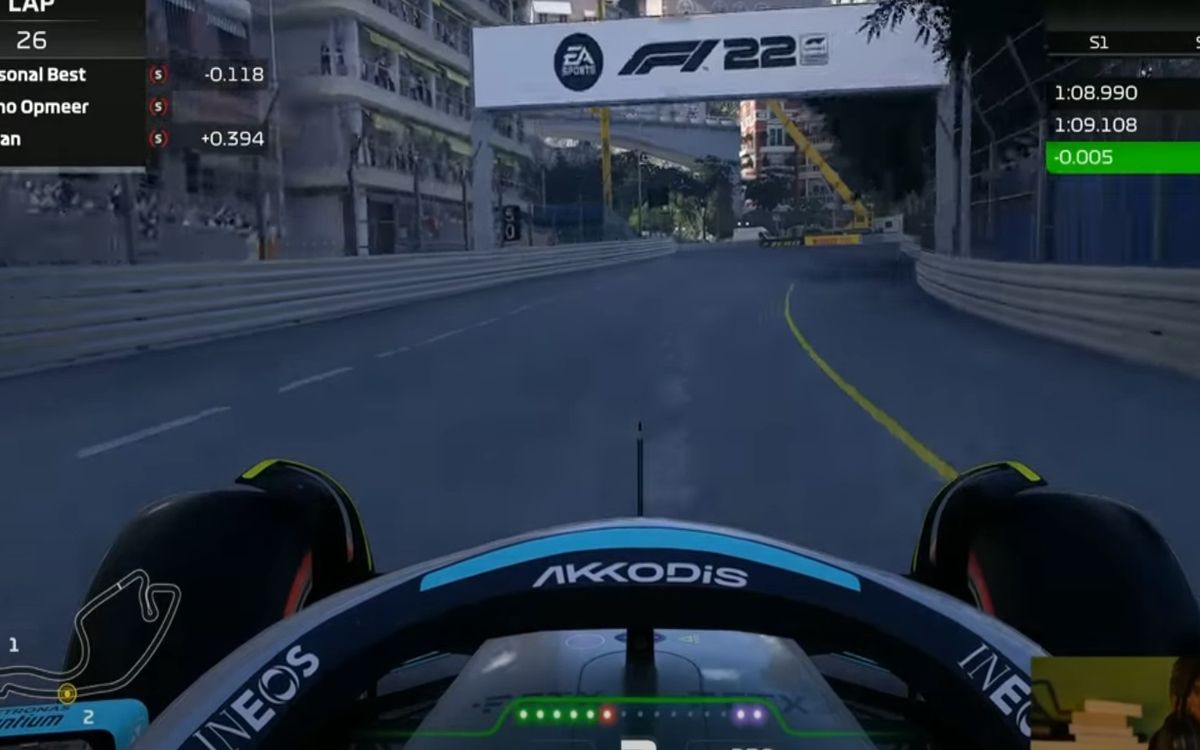The unforgiving, narrow streets of Monaco pose one of the biggest challenges in the F1 gaming series. As we transition from F1 23 to F1 24, understanding the intricacies of the Monaco circuit setup becomes not just a skill, but an art form. Whether you’re aiming to shave off seconds on your lap time or consistently dominate this legendary circuit, our guide has you covered.
TL;DR – Key Takeaways:
- Essential aerodynamics and suspension settings tailored for Monaco.
- Adjustments in transmission and brakes to improve car handling.
- Insider tips to enhance both qualifying and race performance.
- Updated setup strategies for F1 24’s gameplay dynamics.
- Practical advice for intermediate players and pros alike.
The Monaco Challenge: Navigating the Tightest Corners in F1 24
In the world of virtual racing, the Monaco Grand Prix stands as a pinnacle of precision driving. The track layout hasn’t changed much over the years, but with each new release, subtle tweaks in game mechanics require a fresh approach to car setup. The slow, sharp turns and narrow passages demand maximum downforce and meticulous handling to avoid the unforgiving barriers.
Optimal Aerodynamics
For F1 24, your aerodynamic setup is crucial. While maintaining high downforce is essential, the balance between front and rear wings can make or break your lap times. Recommended settings such as a front wing angle of 50 and a rear of 48 provide the necessary grip through Monaco’s tortuous corners.
Transmission and Differential Tuning
Adjusting the transmission settings can greatly impact your car’s response to steering inputs and corner exits. A balanced on-throttle differential (50%) and a slightly higher off-throttle differential (53%) offer better control during turns and minimize the risk of spinning out on exits.
Suspension and Geometry for Agile Handling
The suspension setup should prioritize agility to navigate Monaco’s tight corners. Opt for a front camber of -2.50 and rear camber of -1.00, complemented by toe settings of 0.06 at the front and 0.27 at the rear. These configurations help in sharp turn-ins and stable exits.
Mastering Braking and Tyre Pressure
Effective braking is a make-or-break factor in Monaco. A 100% brake pressure with a 54% rearward brake bias helps manage the car’s tendency to lock up front wheels. Tyre pressures should be higher to cope with the low-speed traction demands; 22.2 PSI on the front and 20.0 PSI on the rear tyres are optimal.
Advanced Tips and Tweaks for Race Day
Even with the best setups, the dynamic nature of F1 24 means ongoing adjustments are necessary:
- Alter wing levels slightly for qualifying vs. race day to optimize speed and stability.
- Adjust differential settings based on track conditions and tire wear.
- Experiment with brake bias during practice sessions to find the perfect balance for each sector.
Insider Secrets: Owen Gower’s Exclusive Monaco Tips
As a seasoned gaming journalist with years of experience on the F1 circuits virtually, here are some of my personal strategies for mastering Monaco:
- Practice the art of late braking into the Nouvelle Chicane and maximize acceleration out of Portier for a better run through the famous tunnel.
- Use the full width of the track, including kerbs, to gain micro-seconds on each corner.
- During the race, keep an eye on tire temperatures and brake wear; both are critical in maintaining performance throughout the lap.
Conclusion: Your Path to Monaco Mastery
With the right setup and a strategic approach, conquering Monaco in F1 24 becomes an exhilarating challenge rather than a daunting task. Use this guide as your blueprint to success on one of the most iconic tracks in the racing world.
FAQs about F1 24 Monaco Setup
What are the ideal aerodynamic settings for Monaco in F1 24?
For Monaco, you should aim for high downforce with a front wing angle of 50 and a rear of 48 to ensure maximum grip through tight corners.
How should I adjust my transmission settings for Monaco?
A balanced approach with a 50% on-throttle and 53% off-throttle differential will help maintain control and prevent spinning out on tight corners.
What suspension settings are recommended for Monaco?
A front camber of -2.50 and a rear of -1.00, combined with toe settings of 0.06 front and 0.27 rear, are optimal for handling the tight turns of Monaco.
How do brake settings affect performance in Monaco?
High brake pressure and a rearward bias help manage braking efficiency and prevent front wheel lockups, crucial for navigating Monaco’s frequent sharp corners.
Any tips for first-time racers at Monaco in F1 24?
Practice the track extensively in time trial mode to familiarize yourself with braking points and cornering speeds. Adjust your car’s setup based on your driving style and the track conditions on race day.
